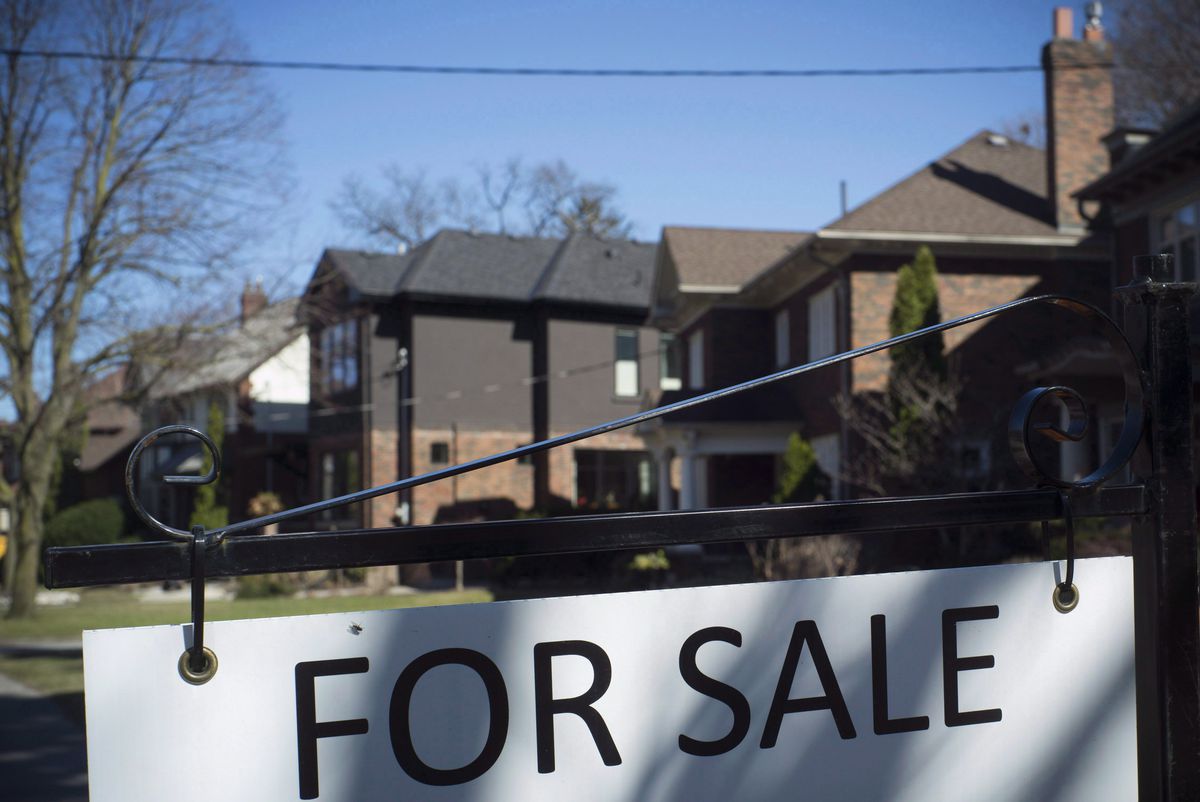The Globe is going with a pretty click-bait-y title. But, I’ve seen others call for coordinating federal immigration numbers with infrastructure planning by municipalities and provinces. It looks like National Bank is on the same wavelength.
“The federal government’s decision to open the immigration floodgates during the most aggressive monetary tightening cycle in a generation has created a record imbalance between housing supply and demand. According to Statistics Canada, the working-age population surged 238,000 in Q2. That was the largest quarterly increase on record and 6.8 standard deviations from the historical norm of 82,000 per quarter. Unfortunately, Canadian homebuilders can’t keep up with this influx. Housing starts for Q2 2023 stood at 62,000 units (or 247,000 annualized). At just 0.26, the ratio of housing starts to working-age population growth fell to a new and stands at less than half its historical average of 0.61 (the ratio is normally below 1 to account for the fact that there is more than one person per household). To meet demand, builders would need to break ground on 144,000 units per quarter (or 576K annualized), double the best performance ever!
At an absolute bare minimum, post-secondary institutions should show students have decent housing before visas are granted.
Housing alone is essential just as a place to live. But then there would also be need for more roads, better public transport, more schools, more hospitals. Population congestion is going to increase and quality of life is going to decrease over the next decade even if all this were to start now.
My municipality: There’s been a large increase in the local population? Better spend millions to subsidize a luxury condominium and make school and hospital cuts.
Convert churches and empty office buildings into affordable housing. Break up the REIT monopoly in the rental market. Make it really difficult to own more than one home. Crack down on foreign investment until the market stabilizes.
Or we can blame immigrants.
Or we can blame immigrants.
Nobody’s blaming immigrants.
There have been a fair number of people and institutions (e.g. National Bank) saying that our infrastructure isn’t keeping up with population growth.
Until we get our health system, housing, and schools sorted out, we should limit immigration to people who can solve those problems.
I disagree, our problems are mostly because of gross governmental mismanagement, that is unlikely to change whether we bring in more immigrants or not.
We need a way to hold government leaders in critical sectors accountable for their failings
Government doesn’t need to fix the problem though. They just need to do enough to get reelected.
Which you can do by attacking transgendered students in 2023 because of this one crazy trick people are calling fascism
Gotcha, we’re going to punish undesirable immigrants.
We will need to drastically change our zoning rules very soon to keep up. Most sane countries allow all land use other than industrial and agricultural inside cities, and they’re better for it.
You mean going to continue to decline…
Bonus points to the fact that all trades jobs are under paid and most are understaffed. Gonna be hard to build new homes when the home builders are too hungry to work.
As one of those folks myself, thanks for thinking of us. The worst of it for me is our city is short on concrete workers & framers, they moved to Ontario in 2020 when things shut down. So now us downstream trades like sheetrock, electrical, & carpenters end up working part time, because projects are trickling out. I haven’t worked in 2 weeks. August is usually so busy I can’t even consider booking vacation. Now it’s dead.
So then we exit that job, move to another industry, and the entire building capacity has shrunk when we need it to grow. So at least pay us well, so we can survive this push-pull supply chain nonsense.
Why are they so hell bent on bringing in all these extra people though? Like I get they need a larger workforce to support social systems. But surely they can wait untill the infrastructure isnt at code fucking red?
It’s just so stupid on the surface that I must be missing something.
I think it’s the result of treating immigrants as a resource.
For example, international students pay significantly more than domestic students, so the federal and provincial governments don’t have to finance post-secondary institutions properly. Meanwhile, post-secondary institutions get a much larger pool of students to draw from who pay so much more. It’s win/win for politicians and administrators: someone else funds post-secondary institutions.
But the politicians and the schools don’t have to worry about infrastructure for the students. We get situations like the one I linked to in the post: not enough housing and programs that don’t offer the academic quality the students were promised.
I guess it’s always been that way in Canada. But I thought we’d left that shit behind.
It just seems so obvious how unsustainable it is. I just feel like there has to be another angle I’m missing. Like he knows the vast majority of immigrants will end up in the GTA which will collapse under the pressure and make Doug look bad enough to give the Liberals a chance? I don’t know.
Because bringing in immigrants at scale is cheap and easy: it gooses GDP, lets you avoid interventionist policy like tax hikes or infrastructure spending, there’s virtually no political blowback, their donor class (and we’re talking both the CPC and LPC) likes it, and the cost of problems is causes is externalized onto other people.
If you’re a neoliberal politician, it’s pretty much all upside.
I mean, all upside except for the collapse of the middle class, the rise of fascism and general human misery, but again, these are all externalized costs for your average neoliberal and their donors.
Could be many reasons.
- tourism from friends and family
- automatic surge of money that they bring
- good optics to the other countries
- I’m sure there are some form of country to country politics
- ensures that when people come, there are common areas to go to automatically to fit in
- some things like schooling charge more for international students
- businesses have more customers resulting in more transactions which brings in more income everywhere
Looking at this based on the sole problem of housing probably doesn’t paint the entire picture to why many countries do similar strategies.
Last year was the first outlier year in decades. If ignore last year our population growth rate (births & immigration) has been pretty flat for decades.
This isn’t a new problem and it’s not now being caused by immigration. Provinces have been massively under investing in infrastructure for decades and the federal government can’t force them to start projects.
The current situation is essentially exactly what Canadian conservatives want, they control most of the provincial governments, and continue to cut spending on infrastructure & social programs. Then conservative media is blaming the failures on the federal government even though the federal government can only actually help if the provinces asked for it, and they have no reason to.
It’s incredible how effective the conservative owned media is at spinning a story.
Just keep building suburban SFH! I’m sure eventually it’ll catch up with demand.
This is the best summary I could come up with:
“The federal government’s decision to open the immigration floodgates during the most aggressive monetary tightening cycle in a generation has created a record imbalance between housing supply and demand.
As today’s Hot Chart shows, all 10 provinces are feeling the housing imbalance, with PE faring the worst with less than 0.1 starts per population growth.
As housing affordability pressures continue to mount across the country, we believe Ottawa should consider revising its immigration targets to allow supply to catch up with demand”
While Brooke Roach’s analysis of M’s sales driving initiatives and self-help profit drivers leads her to be Street high on FY2 EPS.”
The remaining names on the list are Bath & Body Works Inc., WW International, American International Group, JP Morgan Chase, Blue Owl Capital, Tanger Factory Outlet Center, HCA Healthcare, Merck & Co., Vertex Pharmaceuticals, JB Hunt Transport Services, Johnson Controls International, PPG Industries, Republic Services Inc., Spirit Aerosystems Holdings, First Solar, The Southern Company, Apple Inc., Amazon.com, Salesforce Inc., Shift4 Payments Inc., TE Connectivity and Warner Bros Discovery Inc.
Citi analyst Maximilian Layton highlights the surprising resilience of global copper demand and sees a potential buying opportunity ahead,
I’m a bot and I’m open source!
Is it possible they both want monetary tightening to curb inflation, but also want they housing bubble to continue so the interest rates don’t impact it as much? This is consistent with the federal response to the housing crisis so far. Either way, that’s the impact this is having by cranking up housing demand.
I’m not sure if extending the housing bubble is planned, or if it’s a side effect of other policies. But it’s frustrating.
Since Archive.is seems to be down today :(








